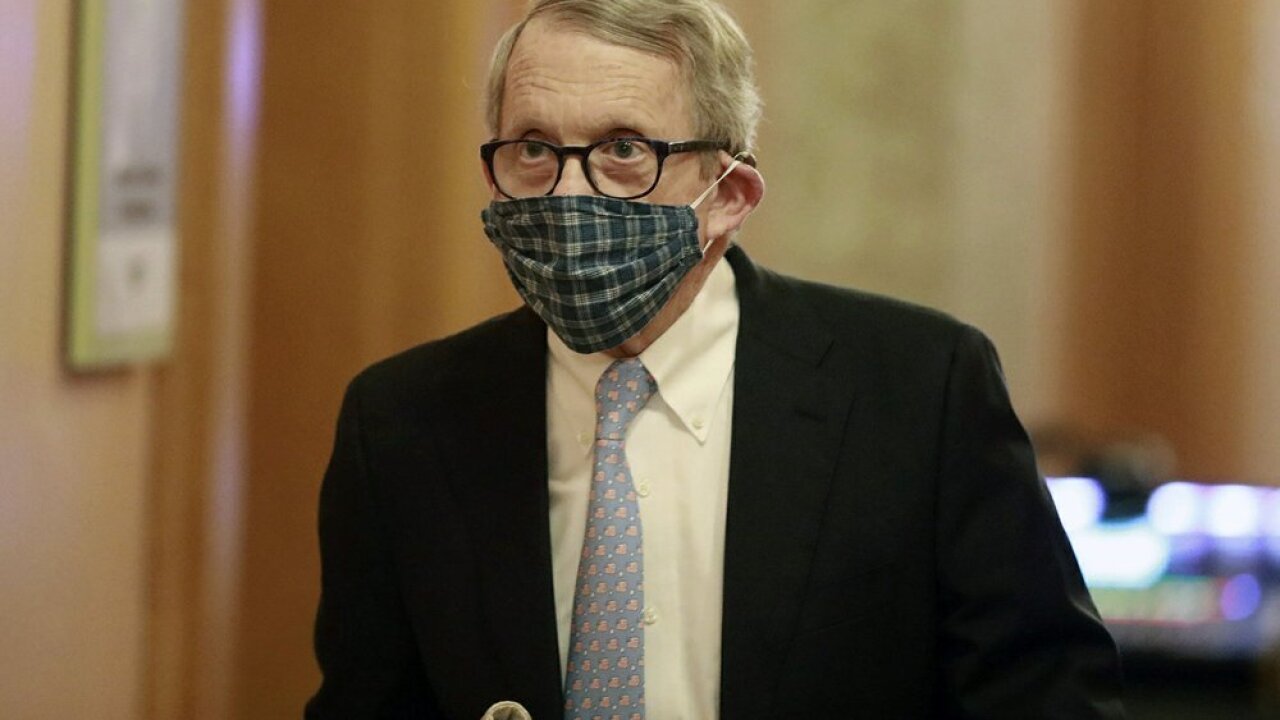Ohio Gov. Mike DeWine announced during a Wednesday address that he will extend the statewide curfew by three weeks, vaccination plans are continuing and a new change to schools' quarantine policy is coming for students exposed to COVID-19.
DeWine initiated a 10 p.m. curfew Nov. 19 for all residents except those traveling for work or to acquire essential goods and services. Wednesday, DeWine extended that curfew, saying cases and hospitalizations throughout the state still have remained too high to loosen the restriction. He expressed hope, however, that rates will improve enough to re-evaluate it by Jan. 23 -- the curfew's new end-date.
Curfew ➡ @OHDeptofHealth is extending the 10:00 p.m. to 5:00 a.m. statewide curfew for another three weeks until January 23, 2021. This is b/c we don’t yet know what effect the holidays may have on our hospitals and health care systems, so we must continue to be cautious. pic.twitter.com/mVDaBYB0vx
— Governor Mike DeWine (@GovMikeDeWine) December 30, 2020
On Wednesday, the Ohio Department of Health announced the state saw 133 deaths, 366 hospitalizations and 36 ICU admissions over the past 24 hours. The state reported 8,178 new cases, as well. DeWine said the county with the lowest incidence rate of COVID-19, Holmes County, still has three times what the Centers for Disease Control and Prevention consider to be a "high level of incidence."
As for vaccinations, DeWine said an estimated 94,078 people have been vaccinated in Ohio; although, he added there have been technological issues with some facilities unable to upload their vaccination totals, so the number is likely higher.
He went on to impress the importance of choosing to accept the COVID-19 vaccine, especially for those being offered it now.
"First of all, this is your choice," he said. "We believe that medical science clearly shows that it's the right thing to do; that it is, if you weigh any risks that might be there versus the gain, the gain far, far exceeds the risk. And I think every medical professional has said that."
He said it's important to know that the vaccine is a limited resource, and those who refuse to accept it when it's their turn may not get another chance for several months.
The way the federal government has set up the vaccinations, he said, means pharmacy companies will visit a nursing home only a total of three times. On the first visit, everyone is offered the vaccine; on the second visit, the second round of vaccinations are administered, and anyone who refused the vaccine the first time has a chance to change their minds. After this, however, there will not be another chance or time to administer the two-round vaccination.
"We cannot guarantee if you pass that up, there's no guarantee when you'll have the opportunity to get that again," said DeWine. "Everyone makes their own choice in this, but know that it may not come back."
The governor also highlighted that he hopes to open up the next round of vaccinations to those teaching in a K-12 setting in the state. He advised school districts to begin compiling a list of any adults in schools who come into direct contact with children, including janitorial staff or other non-teaching positions.
There is no date yet for when vaccines will reach the education sector, but DeWine said it will be a high priority in step with the state's push to get children back into classrooms full time.
"One of the main goals of our vaccination plan is to get K-12 kids back in school," said DeWine.
In accordance with that goal, DeWine also announced the state will now be departing from the CDC's guidelines for quarantining students in K-12 settings. The CDC currently advises that any student exposed to COVID-19 should quarantine for two weeks at home and participate in school virtually, a policy Ohio has enforced since the start of the pandemic. After a month-long study performed in districts throughout the state, DeWine Wednesday announced a change to that policy.
"Schools have been doing a great job implementing measures with consistent masking and social distancing," said DeWine.
Preliminary results from the Ohio Schools COVID-19 Evaluation Team found that if students are appropriately masked and distanced in classroom settings, they do not have an increased risk of catching the virus from a COVID-19-positive student nearby, DeWine said. Because of this, the state will no longer require a COVID-19-exposed student to quarantine at home, unless masking and social distancing cannot be enforced or achieved.
The data supporting this decision was collected from studies involving 728 students in 7 different school districts throughout the state between Nov. 10 and Dec. 18, according to Dr. Bruce Vanderhoff, chief medical officer with the Ohio Department of Health.
"Among the students were 524 children who, while in a school classroom, were noted to be in close contact, under the current CDC guidelines, with someone with COVID-19, " said Vanderhoff. "Others in the study were either further away in that same classroom or outside that classroom but in the same grade.
"And here's what the researchers found: There was no discernible difference in the incidence rate among the exposed students and the students who weren't exposed. The rates for both groups hovered right around 3%. Now, it's important to note that this involved students in classroom settings, not in extra-curricular or community or home settings," Vanderhoff said.
As a result, this change in quarantine policy does not apply to extracurricular activities, including sports. Students who have been exposed to COVID-19 must still quarantine from these activities, DeWine said.
"Ultimately this will be one more step toward keeping our kids in the classroom, which is where we want them to be," said DeWine.
You can watch the full conference below:



